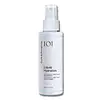What's inside
What's inside
 Key Ingredients
Key Ingredients

 Benefits
Benefits

 Concerns
Concerns

No concerns
 Ingredients Side-by-side
Ingredients Side-by-side

Water
Skin ConditioningAcrylates Copolymer
Rosa Damascena Flower Water
MaskingGlycerin
HumectantPropanediol
SolventC11-15 Sec-Pareth-12
EmulsifyingPPG-1-PEG-9 Lauryl Glycol Ether
EmulsifyingPhenoxyethanol
Preservative1,2-Hexanediol
Skin ConditioningNiacinamide
SmoothingPanthenol
Skin ConditioningChamomilla Recutita Flower Extract
MaskingSodium Benzoate
MaskingSodium Hyaluronate
HumectantSodium Hydroxide
BufferingWater
Skin ConditioningPanthenol
Skin ConditioningPEG/PPG/Polybutylene Glycol-8/5/3 Glycerin
HumectantSodium PCA
HumectantDiglycerin
HumectantUrea
BufferingHydrolyzed Rice Protein
Skin ConditioningSorbitol
HumectantLysine
Skin ConditioningPCA
HumectantAllantoin
Skin ConditioningLactic Acid
BufferingTocopherol
AntioxidantCitric Acid
BufferingTetrasodium Glutamate Diacetate
Ethylhexylglycerin
Skin ConditioningPhenoxyethanol
PreservativeSodium Benzoate
MaskingPotassium Sorbate
Preservative
 Reviews
Reviews

Ingredients Explained
These ingredients are found in both products.
Ingredients higher up in an ingredient list are typically present in a larger amount.
Panthenol is a common ingredient that helps hydrate and soothe the skin. It is found naturally in our skin and hair.
There are two forms of panthenol: D and L.
D-panthenol is also known as dexpanthenol. Most cosmetics use dexpanthenol or a mixture of D and L-panthenol.
Panthenol is famous due to its ability to go deeper into the skin's layers. Using this ingredient has numerous pros (and no cons):
Like hyaluronic acid, panthenol is a humectant. Humectants are able to bind and hold large amounts of water to keep skin hydrated.
This ingredient works well for wound healing. It works by increasing tissue in the wound and helps close open wounds.
Once oxidized, panthenol converts to pantothenic acid. Panthothenic acid is found in all living cells.
This ingredient is also referred to as pro-vitamin B5.
Learn more about PanthenolPhenoxyethanol is a preservative that has germicide, antimicrobial, and aromatic properties. Studies show that phenoxyethanol can prevent microbial growth. By itself, it has a scent that is similar to that of a rose.
It's often used in formulations along with Caprylyl Glycol to preserve the shelf life of products.
Sodium Benzoate is a preservative. It's used in both cosmetic and food products to inhibit the growth of mold and bacteria. It is typically produced synthetically.
Both the US FDA and EU Health Committee have approved the use of sodium benzoate. In the US, levels of 0.1% (of the total product) are allowed.
Sodium benzoate works as a preservative by inhibiting the growth of bacteria inside of cells. It prevents the cell from fermenting a type of sugar using an enzyme called phosphofructokinase.
It is the salt of benzoic acid. Foods containing sodium benzoate include soda, salad dressings, condiments, fruit juices, wines, and snack foods.
Studies for using ascorbic acid and sodium benzoate in cosmetics are lacking, especially in skincare routines with multiple steps.
We always recommend speaking with a professional, such as a dermatologist, if you have any concerns.
Learn more about Sodium BenzoateWater. It's the most common cosmetic ingredient of all. You'll usually see it at the top of ingredient lists, meaning that it makes up the largest part of the product.
So why is it so popular? Water most often acts as a solvent - this means that it helps dissolve other ingredients into the formulation.
You'll also recognize water as that liquid we all need to stay alive. If you see this, drink a glass of water. Stay hydrated!
Learn more about Water